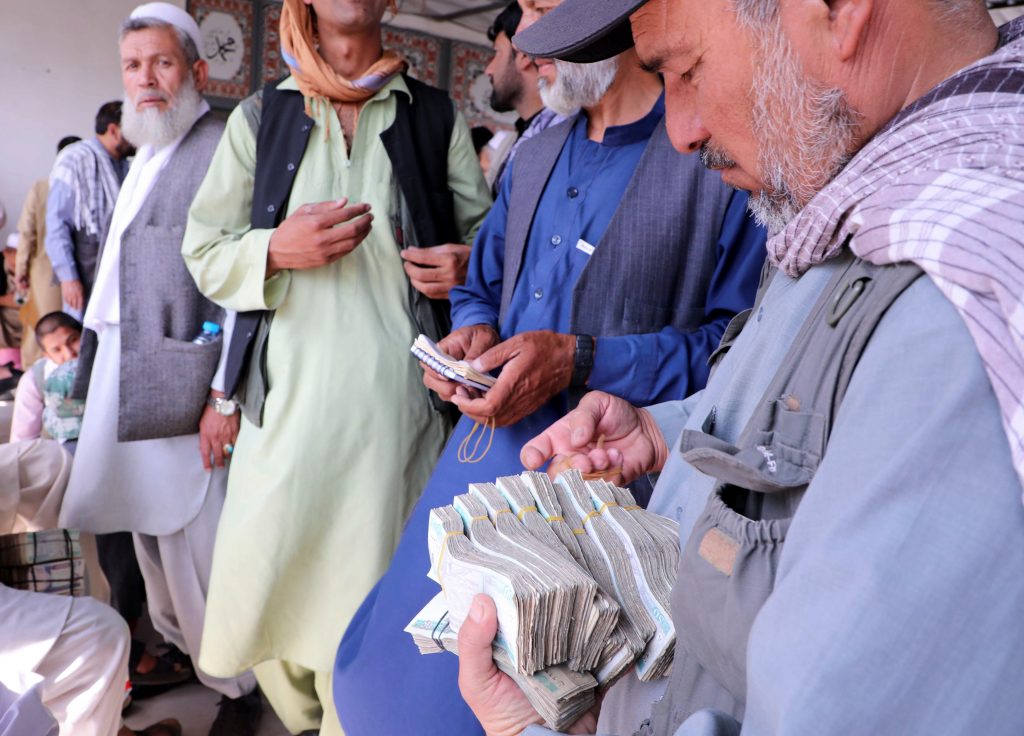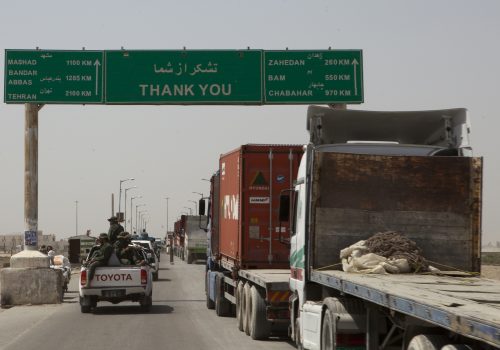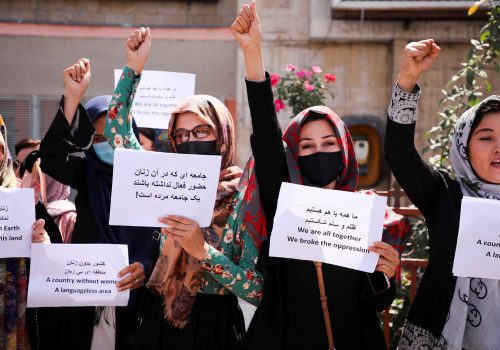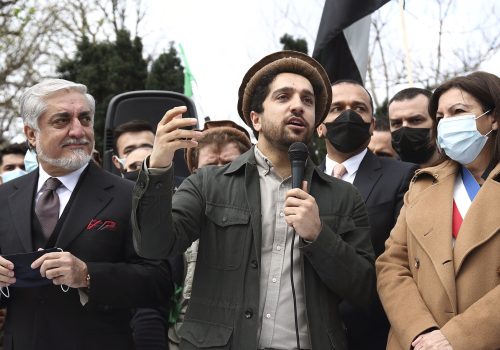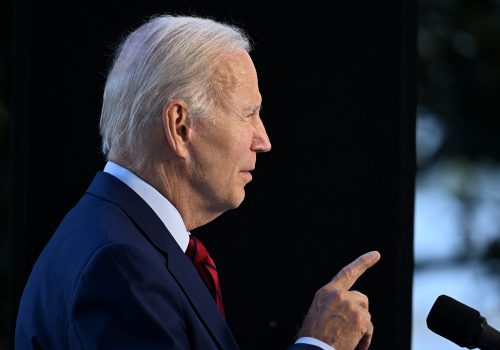Soon after taking power last August, the Taliban vowed to crack down on narcotics. Fast forward to April of this year, and they seemed to make good on that promise, issuing a decree that unequivocally banned the production and sale of illicit drugs.
Unfortunately, that decree has been inadequately enforced, and Afghanistan’s drug trade is booming under Taliban rule.
It will be hard, if not impossible, for the regime to stamp out an industry which provides so many poor Afghans with a livelihood, especially amid the extreme economic and humanitarian crisis which has overtaken the country since last August. Afghanistan’s drug economy expanded dramatically after the US- and NATO-led invasion in 2001. The amount of land under poppy cultivation almost tripled between 2002 and 2020, and the country also started to produce cheap methamphetamine using an abundant local plant—ephedra.
So, how has Afghanistan’s drug trade evolved under the Taliban regime?
Skyrocketing poppy production
According to the United Nations, in 2020, Afghanistan accounted for about 85 percent of global opium production. Under the former Republic, the drug trade was Afghanistan’s largest economic sector, providing full-time employment to over half a million people. The most infamous component of this drug trade—poppy production—was so prosperous that experts doubted the Taliban’s ability to deliver on its promise to ban drugs without immiserating large numbers of Afghans and fomenting resistance against their regime.
To the last point, while the Afghan economy began spiralling shortly after the Taliban takeover due to sanctions, the freezing of central bank assets, and removal of foreign aid—thus depriving farmers of many alternatives to opium cultivation—the economic crisis also robbed the Taliban regime of resources to fight drugs, exacerbated by the withdrawal of foreign law enforcement agencies which had assisted the previous Republic’s efforts.
True, the Taliban movement managed to prohibit narcotics in 2000 during their previous spell in power. But it took the regime several attempts to stop opium cultivation. And the ban, when it came, angered rural Afghans, and was already at risk of unravelling by the time of 9/11. In this context of economic collapse and quickly-evaporating state resources, it came as little surprise when reports emerged in late 2021 that the Taliban didn’t act against the poppy crop. Drought also made opium more appealing to farmers, as it can produce a yield even in dry conditions when the wheat crop might fail.
“Both imagery and reports from the ground indicate there was widespread cultivation, particularly in the southwest, with the potential for a sizable crop in 2022,” said David Mansfield, an independent consultant on illicit economies and an expert on the Afghan drugs trade, while speaking to me this month.
After the decree in April the Taliban tried to give off the impression that it was engaged in aggressive drug control, posting a photo in May of a tractor that was apparently destroying poppy in Helmand province. There were also reports of eradication in other parts of southwestern Afghanistan, suggesting this was more than a mere publicity stunt. But the poppy being targeted was the second opium crop of the season, which is much smaller than the first. Wiping it out thus makes little difference and throws into doubt the Taliban’s intentions to actually ban cultivation.
Methamphetamine: The new drug on the block
Though less discussed than the poppy trade, the methamphetamine industry has also intensified in Afghanistan. Recent satellite imagery revealed an expansion of the Abdul Wadood bazaar, southwest Afghanistan’s major meth hub, and more than 250 mounds (or an estimated 11,886 cubic meters) of ephedra.
Indeed, there was so much supply that, by early November, prices for ephedra had fallen drastically, from $1.80 per kilogram in 2018 to $0.63 per kilogram. But then, the Taliban imposed a little-noticed ban on the plant in December, and prices shot up. The decree was limited to a few provinces and came too late to affect the harvest, which had just ended. Most importantly, though, it actually benefited ephedrine and meth producers by boosting their profits, while increasing revenues to the Taliban who fined those transporting ephedra.
Yet again, the “bans” appeared to be more talk than walk.
Afghanistan is well connected to regional and global drug markets
Meanwhile, the trafficking of drugs via major highways out of Afghanistan remains high. Along the Balkan Route from Pakistan, Iran, and Turkey to Europe, heroin and meth continue to flow in large quantities, supplying markets throughout and outside Afghanistan’s immediate region.
South Asia
At Torkham on the Afghanistan-Pakistan border, customs reportedly seized an “unprecedented” amount of drugs in late 2021 and early 2022, including a record 130 kilogram haul of heroin. October also saw one of the biggest meth busts in Peshawar’s history. A Pakistani law enforcement official told me in January that trafficking had increased since the Taliban took over, having said in November that a “huge quantity” of narcotics was “reaching the coastal belt of Balochistan and Karachi.”
Seizures in that area have indeed been sizable. In May alone, Pakistan’s Anti-Narcotics Force made a massive bust of more than one ton of opiates and 255 kilograms of meth in the province of Balochistan, while the Pakistani Navy intercepted 4.5 tons of drugs in the northern Arabian Sea.
Furthermore, Pakistan is not only a transit country for methamphetamine leaving Afghanistan, but also a large market for the drug, which is popular in educational institutions. Pakistani drug treatment professionals told me that meth abuse was becoming rampant in the country.
Afghanistan-origin drugs also make their way across South Asia. Sri Lanka, where there have been repeated maritime hauls since the Taliban takeover, seized 325 kilograms of heroin and meth in April this year. In July, Nepal recorded an unusually large heroin bust which authorities suspect came from Afghanistan, pointing to a further expansion of the trade.
India is perhaps the most concerning part of the regional trafficking picture. With a massive population and a large number of opioid users, the country is highly susceptible to Afghanistan-origin drugs. In January, the Director-General of India’s Narcotics Control Bureau S.N. Pradhan told me that the Taliban takeover could lead to a rise in drug-trafficking which already occurs along established smuggling routes via Punjab (sometimes using drones) or by sea to India’s west coast.
Indeed, there have already been a series of drug seizures at Indian ports, most notably a vast haul of almost three tons of heroin at Mundra in Gujarat last September which allegedly originated in Kandahar, Afghanistan, before being trafficked to Iran and then on to India. In 2021, Gujarat police seized the highest amount of drugs in the history of the state, at least eight-hundred times more than the previous year. And the seizures have continued this year: in April, 260 kilograms of heroin were intercepted at Kandla port, and seventy-five kilograms from a container near Mundra in July.
Iran and Turkey
Narcotics trafficked from Afghanistan to Europe often travel through Pakistan and then Iran, where there have been massive busts in the southeast near the Afghan border. More than one hundred tons of drugs were seized in the area in the last eight months of 2021, according to local authorities.
Big hauls have continued this year. Only recently, over one ton of opium was grabbed in the southeast and a record-breaking 1.1 tons of meth found hidden in tankers entering from Afghanistan. An Iranian official said that seizures of Afghanistan-origin meth and heroin had increased. From Iran, narcotics enter Turkey. Traffickers are reportedly exploiting unprecedented refugee flows to smuggle drugs across the border. Turkish authorities have also reported large seizures, including more than a ton of liquid and crystal meth intercepted in Istanbul in May and another large bust in July.
And, the results of this are profound. Meth has reached every single Turkish province, the government claims, and was second only to cannabis as the most widely-used substance in Istanbul, according to wastewater analysis. It is therefore no surprise that Ankara is prioritizing meth and increasing its efforts to combat trafficking. In 2021, Turkey intercepted 5.5 tons of the drug, up from 4.1 tons the previous year. Notably, this is double the amount seized in Europe as a whole.
The broader Middle East and Central Asia
Afghanistan-origin meth has not only been flowing in large volumes to Iran, but also elsewhere in the region. There was an increase of “seizure events in the Near and Middle East” from 2020-2021, according to the United Nations Office on Drugs and Crime (UNODC).
Iraq has long been a destination for drugs smuggled from Iran, and in December reported a rise in drug-related arrests on its eastern border. Crystal meth accounted for 60 percent of the country’s drug trade in 2021, feeding a growing problem of domestic misuse.
Then there is the Gulf, where the United Arab Emirates announced in June that crystal meth was one of the most commonly seized drugs, with large hauls such as a mammoth bust of more than one ton in Dubai last April. Oman has also intercepted meth this year.
Central Asia has not escaped the narcotics problem, either. According to the Global Initiative Against Transnational Organized Crime, drugs are smuggled through Tajikistan and Kyrgyzstan, and both have reported increased seizures this year. Tajikistan recorded a 52 percent rise in drug seizures during the first half of 2022, with its anti-narcotics chief stating that trafficking had increased since the Taliban took power. In Kyrgyzstan, about six tons of illicit drugs were intercepted in the first six months of 2022, 60 percent more than in the same period last year.
Continued trafficking from Afghanistan has also been noted by Russia—a key destination for drugs smuggled through Central Asia—whose foreign ministry lamented in November that the “drug threat” was still a “pressing problem” and that “the situation has not changed after the Taliban came to power.”
Sub-Saharan Africa
Then there is the Southern Route through Pakistan and Iran to Africa. Recent years have seen heroin and meth from Afghanistan seized in the Arabian Sea and Indian Ocean as it is trafficked to Mozambique or Tanzania and then on to South Africa and other countries. Last November, alone, there were eight separate drug interdictions along this trafficking route by international maritime forces, which in 2021 seized a record amount of heroin and three times more meth than any year since 2016.
At the start of this year, the Britain’s Royal Navy intercepted more than a ton of Afghanistan-origin heroin, hashish, and crystal meth in the Gulf of Oman, followed by another ninety kilograms of heroin in May.
Farther afield, in South Africa, police seized seventy-five kilograms of heroin and meth in July and arrested a suspect allegedly connected to an Afghanistan-based drug gang, further evidence that Afghan drugs had penetrated African markets.
The Taliban’s narcotics “ban” is smoke-and-mirrors
The record so far strongly suggests that the Taliban has not enforced its narcotics ban. Drug production and trafficking have remained at high levels or increased since the change of regime in Afghanistan. Furthermore, given that these problems are international in nature, a regional effort is needed to combat them. India, for one, has stepped up its anti-drug diplomacy with Iran, attending three days of meetings in Tehran this summer. But old rivalries undermine a comprehensive approach. India convened a meeting of national security chiefs to discuss drugs and other issues in Delhi last November, but Pakistan and China were absent.
While Afghanistan’s drug trade is indeed a global phenomenon, that should not distract us from the apparently rising levels of substance abuse in the country as desperate and impoverished Afghans try to lose themselves in narcotics. Many addicts are apparently left to die in public. And, on those occasions when the Taliban does try to do something, its approach has been brutal, rounding up drug users, shaving their heads, and beating them or dousing them in water.
The new government does seem to have boosted revenue by rigorously enforcing border controls, according to a new report by David Mansfield. But imports are subject to more stringent checks than exports, Mansfield told me this month. And there is no evidence that the Taliban’s crackdown extends to drug-trafficking, nor sign of a shortage of drugs along the main trafficking routes out of Afghanistan. Far from it: large seizures point to high volumes of smuggled narcotics.
The long-term consequences of these factors remains yet to be seen
The future, however, is uncertain. According to Mansfield, the price of meth, and to a lesser extent opiates, remains elevated, reflecting concerns about prohibition. He also told me this month that the Taliban—facing sanctions and looking to attract development assistance—could potentially move against ephedra (targeting meth production) without causing widespread unemployment.
But it would be much harder for them to rein in the opium industry without plunging hundreds of thousands of Afghans into deeper poverty. For that reason, a sweeping drugs ban would be very difficult to sustain. And, even if the Taliban did stamp out opiates, that could cause additional problems if countries tried to substitute heroin with opioids such as fentanyl, which happened in North America with devastating consequences. There are already signs of synthetic opioid use in Afghanistan, where pills known as “Tablet K” have been found that contain tramadol. In Pakistan, fentanyl seizures increased last year, too. India must also be considered particularly vulnerable to such a scenario, seeing as it has large numbers of opioid users and a massive, poorly-regulated chemical and pharmaceutical industry to supply them.
Whatever happens, South Asia’s drug problems are here to stay.
Rupert Stone is an independent journalist working on drugs, security and geopolitics in Asia.

The South Asia Center is the hub for the Atlantic Council’s analysis of the political, social, geographical, and cultural diversity of the region. At the intersection of South Asia and its geopolitics, SAC cultivates dialogue to shape policy and forge ties between the region and the global community.
Related content
Image: Afghan money exchange dealers trade at a market in Kabul, Afghanistan, on September 4, 2021. Photo by Reuters.
